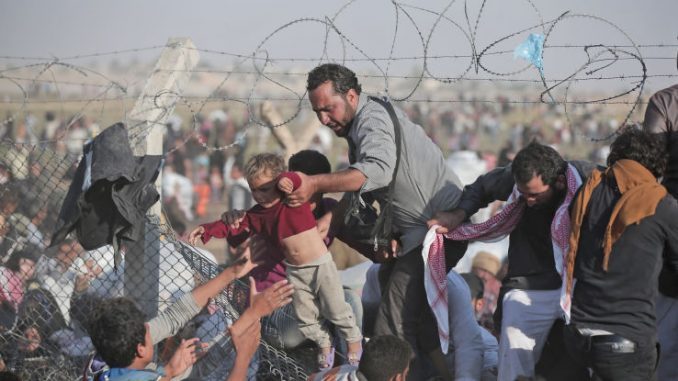
Iranian diplomat said on Friday that the US proposal to establish safe zones in Syria will only “worsen the situation further,” in a refusal that resembles a new chapter of tension between the two countries.
He said last week he would “absolutely do safe zones in Syria” for refugees escaping violence and that Europe had made a mistake by admitting millions of refugees.
Trump raised the issue publicly during an hour-long telephone call on Sunday with Saudi Arabia’s King Salman bin Abdulaziz and Sheikh Mohammed bin Zayed al-Nahyan, Abu Dhabi’s crown prince, the White House said.
Iranian refusal
Hossein Amir-Abdollahian, adviser to the speaker of the Iranian parliament said the US proposal is refused by Iran and it will only worsen the situation on ground.
“Through the plan they violate the territorial integrity of Syria and exert political pressure on the Syrian regime headed by Bashar Assad… Syria is a sovereign state in which there is a political regime… We stress that any move that violates the national sovereignty and territorial integrity of Syria is a mistake that [US President Donald] Trump can make. This step may further complicate the situation in Syria, will turn the hopes raised in Astana, in a disappointment, will bring Syria back to war,” Amir-Abdollahian said.
Iran found a natural ally in Bashar al-Assad and his regime as it is seeking to widen its influence in the area and Syria was the perfect next step.
Iran in the same time supported Assad regime by money and fighters to defend his role and helped him to achieve important victories against the rebels forces and retrieve large areas that were held by the rebels.
In return, Assad regime has freed Iran’s hand in Syria to achieve its long-awaited dream. Iran started a demographic change in the Sunni-populated areas in Syria and sought to change the face of the Syrian cities by forcing the Shiite festivals in the heart of Damascus, adding Syria to the list of its controlled areas and making it gradually the 32nd Iranian province.
In conclusion, Iran forces itself as an essential player in the Syrian issue and organized along with Russia and Turkey peace talks between te government and the opposition after all the previous political efforts guaranteed by UN and US have failed.
Russian precautions
The US decision to make the safe-zones put it again on odds with Russia too, which became the prominent player in the Syrian case and forces its view of the political solution after the previous US administration was weak and lost its chance.
The Kremlin meanwhile said a plan for safe zones should be thoroughly considered.
Asked to comment on the draft executive order, Russian President Vladimir Putin’s spokesman, Dmitry Peskov, underlined the importance to “thoroughly calculate all possible consequences” of the measure. He noted on Thursday that “it’s important not to exacerbate the situation with refugees.”
Peskov said the Trump administration did not consult Russia before announcing the plan to establish safe zones.
“No, our American partners did not consult with us. It’s a sovereign decision,” Peskov said on a conference call with reporters.
“It is important that this (the plan) does not exacerbate the situation with refugees, but probably all the consequences ought to be weighed up.”
In addition, Russian Foreign Minister Sergei Lavrov said on Wednesday that U.S. President Donald Trump should be more specific about his proposal to set up safe zones in Syria and said attempts to implement a similar policy in Libya had been tragic.
Lavrov said he hoped Russia could discuss the issue with the U.S. State Department once it had drawn up more detailed plans for the safe zones.
Lavrov said he did not think, from what he knew so far, that Trump was proposing to roll out safe zones in the same way as it had been done in Libya in 2011.
